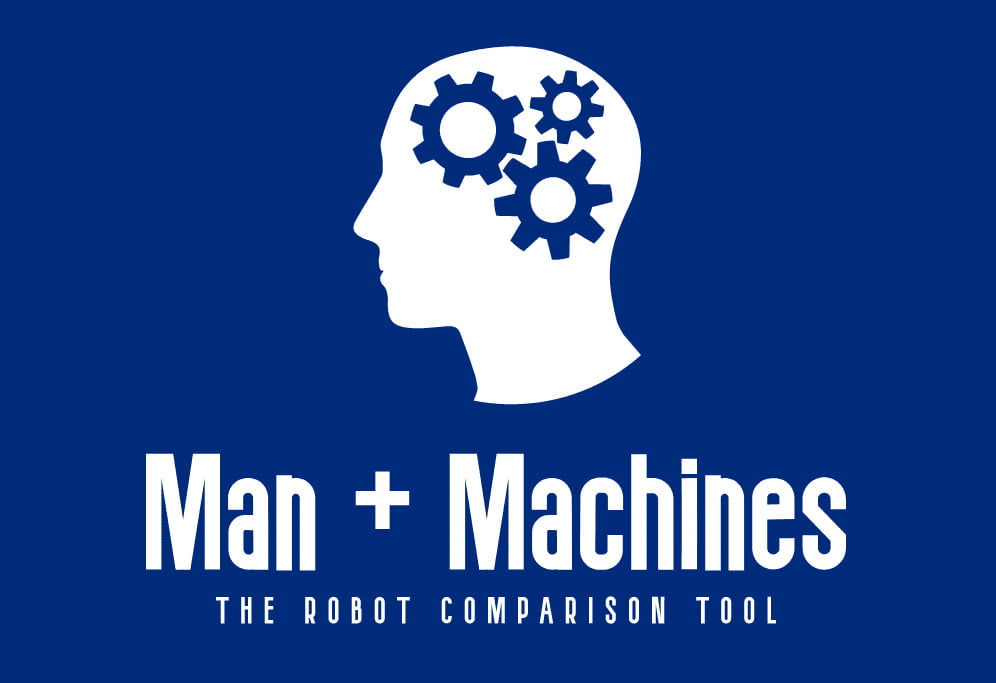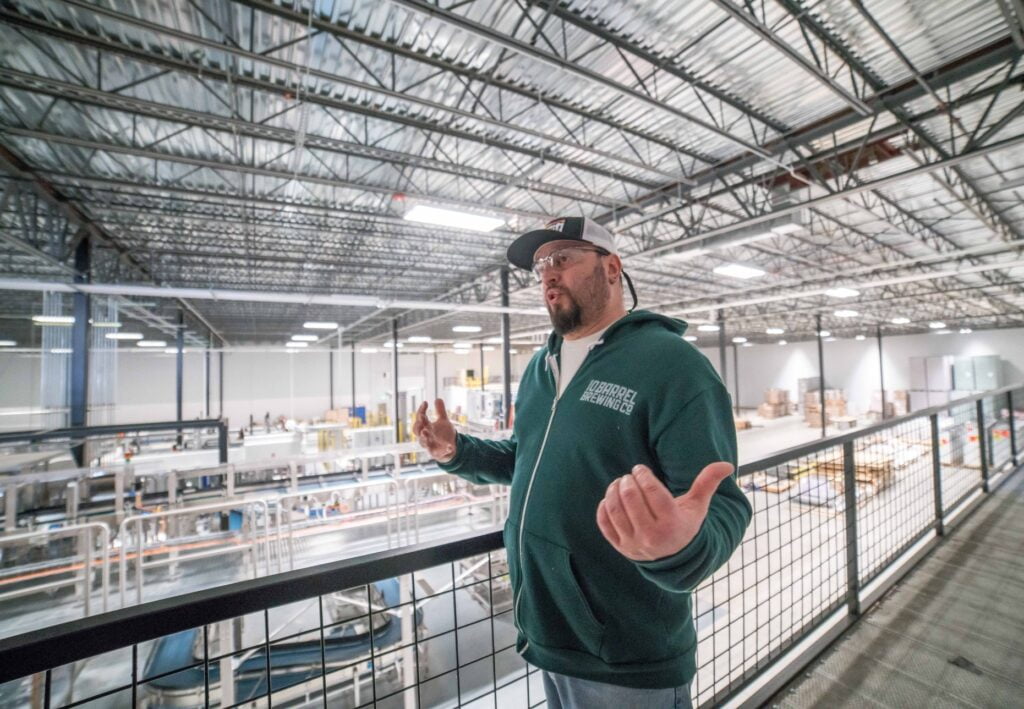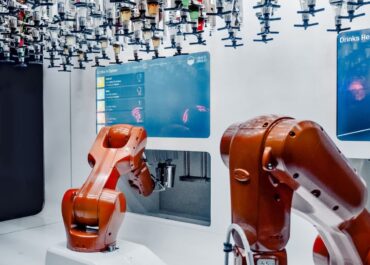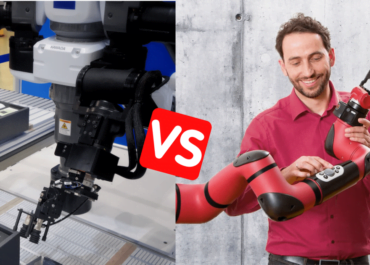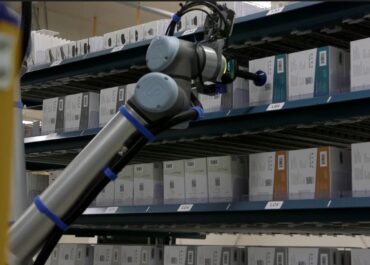Low budget, high-variation products, lack of technical talents … There are many barriers for SMEs to implement robots in their factories.
The good news is new robot models are addressing these limitations with game-changing features. Collaborative robots are affordable, safe, and flexible solutions to automate your low-volume production processes.
But I grant you, it’s not easy to know where to start. So here’s a guide on how you can leverage cobots for your SEM industrial business.
Why automate as an SME factory?
SME factories have budget, skills, and space restrictions that large industrial enterprises don’t have. And that makes sense.
They have to fulfill the order of their clients in time, optimize their already tight margins, and retain skillful workers, all on a space-limited shop floor.
Still, automation is the bold move to do, as it can help you grow your business and tackle all those challenges. Robots can :
- Increase your profitability on low-volume processes to keep your margins.
- Improve output quality and consistency, while the demand for quality is getting more intense every day.
- Reduce labor shortage by enhancing working conditions.
Aren’t robots costly and hard to implement? That’s not the case for collaborative robots.
How can collaborative robots help your industrial business?
Collaborative robots are robots specifically made to address SME’s industrial requirements. Compared to traditional industrial robots, they provide you with key features like :
- Low-cost and good return: cobots are priced on average under 30 000 USD and can significantly reduce costs.
- Safe and lightweight design so that employees can easily work alongside them.
- Ease of programming that doesn’t require technical skills.
- Flexible deployment, so that operators can handle small batches and product variations
As such, they can handle many SME-specific applications :
- Ease machine loading
- Automate part picking, transporting and assembling
- Make safer and more consistent screwdriving, gluing, welding, sanding and palletizing applications
- Enlarge your intelligence with vision quality control and inspection
Do you relate to that? Let’s see how you can start.
SME Robots: Five accessible models
There are already many cobot manufacturers that are providing models with competitive prices. Here are the ones that can get you the best value for money :
Universal Robot

Universal robot is a reference brand on the cobot market. By connecting to a wide range of end-effectors and partner tools, UR robots can handle a wide range of applications. They also provide a safe and lightweight design, easy-to-use interface, and good speed and precision performances. The UR3 -lowest reach and payload model- starts at around 20 000 USD, so it’s a good first choice to automate your SMEs production line.
Franka Emika

Franka Emika has always sought to make automation accessible to SMEs. The Franka Emika model (costing around 10 000 USD) is a very user-friendly cobot for small applications. The latest cobot model version Franka production 3 (costing around 25 000 USD) handles higher requirements, with increased performance, outstanding sensibility, and lighting fast programming.
Dobot

Dobot CRX Series target SMEs industry with an accessible and complete model range. Starting at 20 000 USD, Dobot cobots are easy to deploy, productive, and still offer advanced technologies. While the safety-skin features ensure maximal safety, Dobot partner ecosystem provides many innovative end-effectors. It’s a good choice if you want to keep up-to-date.
OB7

OB7 Productive robotics robots focus everything on efficiency. Starting at 25 000 USD, they are one of the easiest and fastest cobots to program. You just need to demonstrate the working path or rely on built-in templates to teach a new task. The OB7 series also provide high technical specs (like a 7-axis arm and high reach) to handle your most demanding processes. It’s a good option to automate your machine-tending and palletizing tasks.
Fanuc CRX

Historic industrial robot manufacturer, Fanuc has also introduced cobot models on the market, and it’s a great option for automation starters. Costing around 20 000 USD, Fanuc CRX series delivers one of the best user experiences, with intuitive programming and hand guiding. You can also leverage Fanuc robust design and extensive compatibility with in-house and third-party tools.
How to implement your robot on your SME shop floor?

With space, labor, and budget limitations, it’s not easy to integrate a robotic solution into your SME factory. Here are the best practices for implementing a collaborative robot on your shop floor:
#1 Assess your existing resources and needs
- Goal: do you want to increase your throughput, reduce your cost and cycle times, enhance quality and consistency output, or improve worker safety?
- Application Type: do you want to automate your assembly, welding, screwdriving, dispensing applications…?
- Industrial requirements: what’s the weight, size, and shape variability of your parts? Is it difficult or too tight to reach? How fast do you need your application to run? Does it need precise motion?
- Space: how much space do you have to add a robot and accessories to your working cell?
- Labor: how many employees can devote their time to programming and monitoring the robots?
- Budget: how much budget do you have and which ROI and payback period are you expecting?
#2 Choose the best robot and tool supplier
- Technical specs: what’s the reach, payload, weight, height, and size of the robot application (robot arm + mounting device + end-effector)? What’s its maximal speed and precision (repeatability)?
- Price: which model range can best fit your needs, and what’s the price range of the series?
- Ease of use: is the robot easy to set up, move, program, and quick to reprogram for your operators?
- Flexibility: is your robot compatible with a wide range of effectors and tools to handle other applications? Can it work with sensing technologies like computing vision?
- Safety: does the robot provide built-in safety features like force limitation, space-delimitation, safe-stop, or collision detection?
#3 Rethink the work organization
Getting a new automation solution implies redefining your workspace and labor organization. As your cobot can work alongside your workers, you can restructure the workspace. For example, you can facilitate workers’ and robot movements in and out by having open work environments. That way, your workers can easily come to check your robot’s work and get back to other priorities.
Furthermore, as your robot will drive screws, who will supervise it, and what will screwdriver workers do? Will they monitor its work, manage changeovers, or handle other tasks?
We recommend leveraging human-machine collaboration – where robots continuously operate and workers monitor their work and are ready to intervene in any unexpected situation so that you get the best of both.
#4 Involve your employees from the get to go
From the start, your workers should be a part of your product consideration, buying, and integrating process. They are the ones going to use and supervise the robot application, so you need to consider their input and requirements. That also will increase the acceptability of the robot.
When you’ve bought a new robotic solution, you also need to ensure they are well-trained to use this working tool. You need to provide them with enough educational resources and support about programming the robot, but also about working safely with them. The more they understand its functioning, the better the collaboration.
#5 Iterate and monitor your automated application
When the robotic application it’s running, you need to continuously review its performance, output quality, and safety procedures. That way you can check for improvements and even find other ways to automate your production line.
Ready to start your SEM automation journey ? Your turn to leverage robots !
